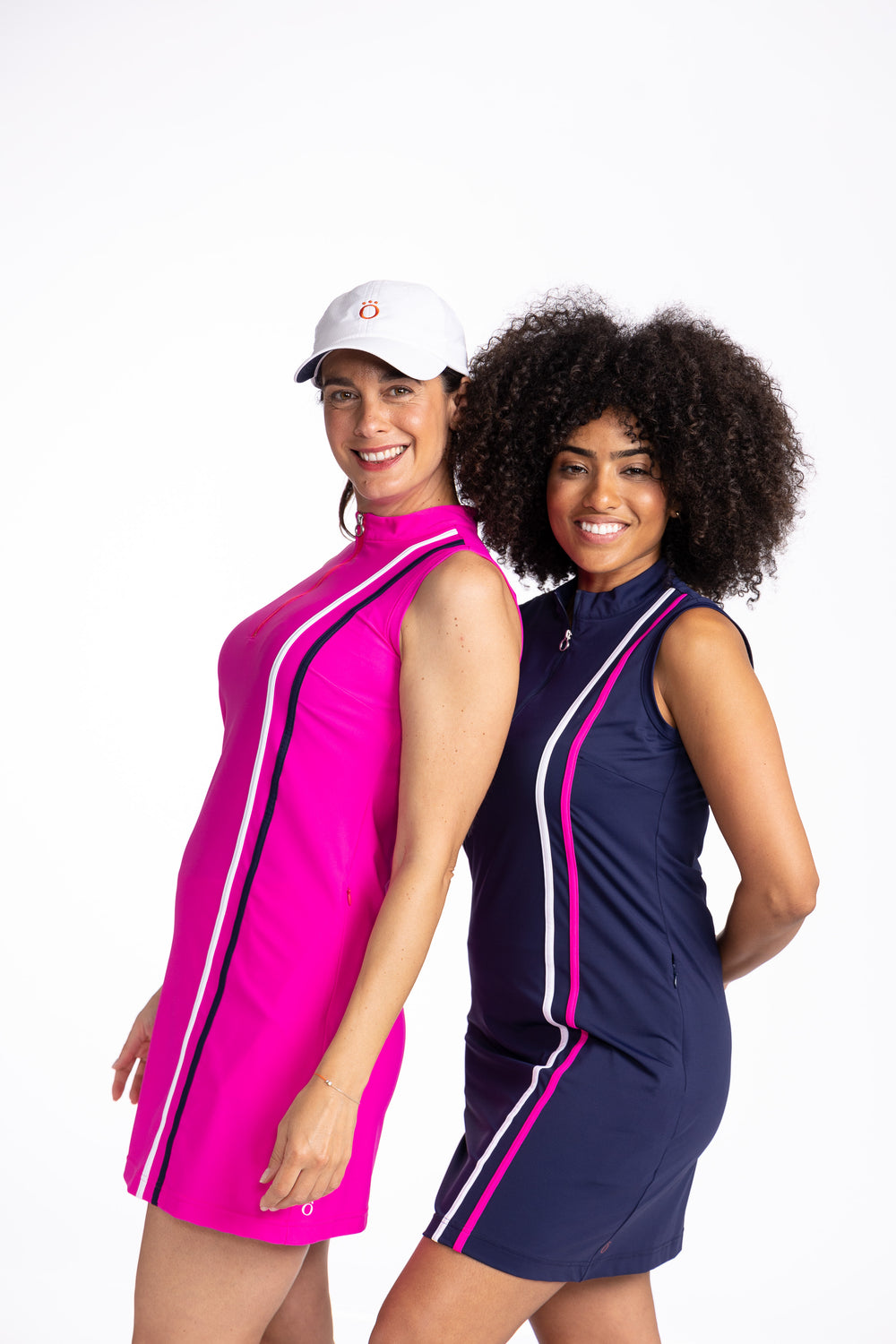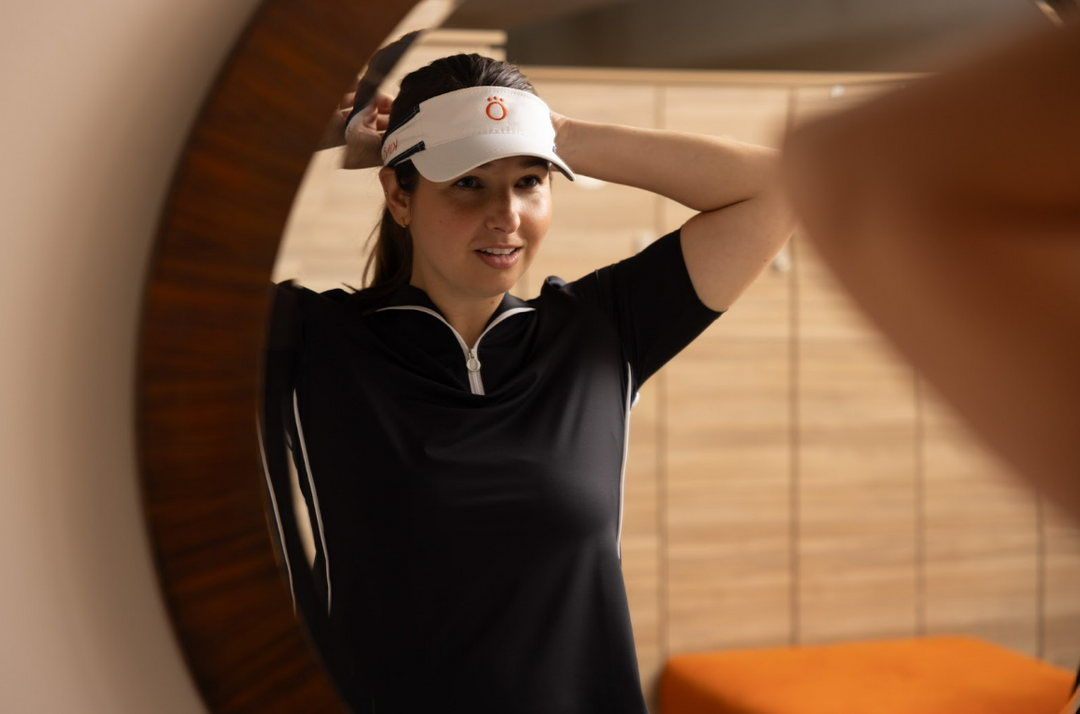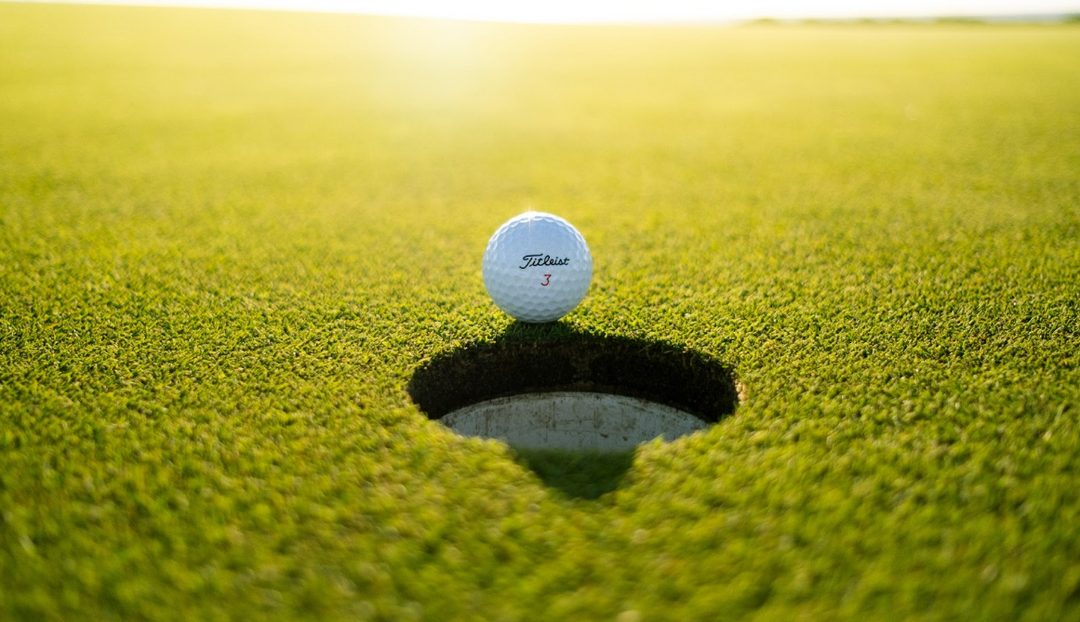Five Years Later: Revisiting LPGA Dress Code
It’s been five years since the LPGA released its updated Tour dress code. The backlash at the time was immediate and intense. Women golfers, commentators, and sports journalists spoke out about what they called “unfair” and “sexist” oversight. The clock seemed to be turning back on women’s golf attire.
The new, stricter dress code stated that all racerback tops need to have a collar, leggings (unless under a skort or shorts) and joggers are not allowed, and plunging necklines are banned. Other changes expressly define that skirt/skort/short lengths must fully cover a player’s bottom (even if paired with a shortie) whether standing or bending.
2017 also saw women and girls banned from United Airlines flights for wearing leggings and school dress codes for girls being challenged across the country. So the climate was primed for the LPGA to get its players on the same page.
We understand the reasons that a professional players’ organization has a dress code in place, especially in a game that has a long and seasoned history of adhering to tradition and proper decorum. But also, we recognize that this is not only an issue of women’s golf fashion. It’s about sports attire in general and, more broadly, the shaming and policing of women’s bodies.
Let’s take a step back and re-examine why the LPGA created their strict dress code five years ago and where we hope it will go next.
The mission of the LPGA, founded in 1950, is to provide “women professionals the opportunity to pursue their dreams in the game of golf.” As such, we respect their right to request that players, as professionals, present a professional image, that they look like positive role models for young girls to emulate.
The reality is that LPGA pros are in a different category. This is their job and they should potentially be a bit more buttoned up than a golf influencer playing in a sports bra and shorties on Instagram. However, if we want to appeal to a broader audience of young women, sticking to the men’s club tradition of discrimination by color, gender, and now, attire, simply isn’t going to help grow the game. It’s a barrier that the sport needs to figure out in order to encourage a new crop of young golfers. With many young players discovering a love of golf at places like Top Golf, dress code policies must be relaxed in a way that allows these players to feel comfortable walking onto a country club course.
The roots of golf in the U.S. are steeped in a tradition of exclusivity and elegance of early clubs. And we have come a very long way. Can you imagine playing in long skirts and heels as our foremothers were required to do as late as the 1930’s and 40’s? As a strong holdout in gender and racial barriers, country clubs hold a formal reverence for times past, a time of gentlemen and ladies (and even have some fairly absurd rules about what men and women can wear). Some conservative critics maintain that loosening golf dress codes is a slippery slope that could lead to board shorts for men or bikini tops for women on the green.
But also, golf must evolve to a place where we truly view pro players as athletes. Golf is often thought of as a sedentary sport that doesn’t require true athletic prowess but as players, we know the truth. To fire a ball down the fairway requires strength, stamina, coordination, and power. Players, be them professional or amateur, are athletes. And in the name of performance, clothing matters.
We want to preserve the tradition we love about the game but believe athletes should be able to wear what they need for optimal performance. As June marked the 50th anniversary of Title IX, it’s the perfect time to revisit how women are treated in sport and open a dialogue around what is appropriate gender-based attire. From charter schools to college and Olympic sport, there’s an awakening about what is practical and whether having an old guard enforcing antiquated style potentially hinders performance. Do we really need a prescriptive and authoritarian code or can we as players be trusted to be appropriate and sensible in our uniform decisions?
Fact of the matter is that early golfers (we’re talking back in Scotland) wore clothing designed for the elements. So why hasn’t women’s golf fashion and golf fashion in general evolved to allow for this, too? If we are playing in the peak of summer golf season, battling steamy and sultry conditions, why must we cover our shoulders? Or stick to strict rules about how much leg can be shown? Is casual golf attire, like leggings, that takes us from a yoga class to the tee box really that bad? What is so risqué or unsettling about a comfy pair of joggers on a chilly morning that women can’t sport them on most courses? The golf hoodie, a casual staple in any closet, is an example of regularly acceptable attire that’s been slow to gain acceptance on golf courses. A certain level “casualization” in the game is necessary if we want to welcome younger players to our fairways without them fearing of shame or embarrassment.
So the debate continues about whether the dress code is restrictive and sexist or if it helps the professional players command deserved respect in the golf world. We have fought long and hard to play this game and be granted access and membership to clubs.
Of course, there is also the question of unfair advantage. Does wearing a less constrictive uniform give a player a bare leg (or arm) up on the competition? As in the 2022 Olympics, is this a potential reason that dress codes come into play for the LPGA?
Unlikely. It’s more about golf’s identity. Fashion trends of today are challenging the status quo in a sport that’s struggling to align athleticism with tradition. At KINONA we appreciate a blend of the two, fit testing our clothing with feedback from pros and amateurs alike to ensure a fit like no other (and one that takes a nod from the runway).
We too have erred in women’s golf fashion. In our original blog on the LPGA dress code in 2017, we shamed comfort for fashion’s sake with a dig at leggings under skorts on the course. And here we are in 2022, re-examining our own beliefs about appropriate women’s golf clothing. KINONA leggings under a golf skirt (or even by themselves *gasp*) is totally acceptable in our opinion. Women can wear what makes the most sense to perform at peak standards, whether that’s joggers, sleeveless quasi-racerbacks, or shorter skorts with mesh shorties, which likely will be met with dismay from traditionalists.
In a game that boasts far more etiquette rules than other sports, we want to be a voice for building women up rather than tearing them down. KINONA, as a women-owned for-women company, will continue to question why golf fashion follows the trends that it does. We're at the forefront of cutting edge golf clothing, using earth-friendly sustainable materials and smart designs to combine fit, function, and fashion.
When we signed up to shake up the world of women’s golf apparel, we understood the assignment.





